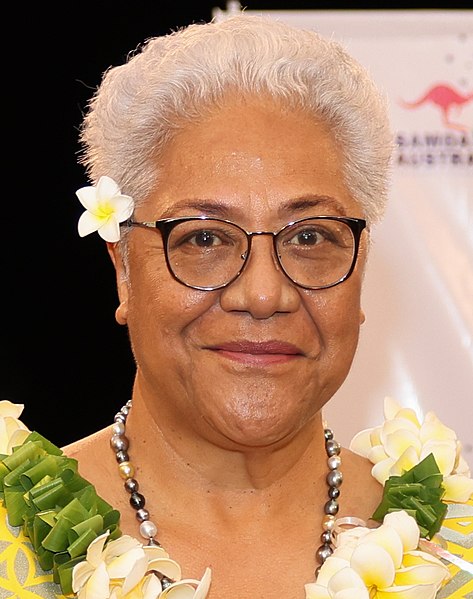The prime minister of the Independent State of Samoa is the head of government of Samoa. The prime minister is a member of the Legislative Assembly, and is appointed by the O le Ao o le Malo for a five-year term. Since independence in 1962, a total of seven individuals have served as prime minister. The incumbent was disputed due to the 2021 constitutional crisis, when Tuila'epa Sa'ilele Malielegaoi refused to accept the results of the 2021 general election. On 23 July 2021, the Samoan Court of Appeal ruled that the Faʻatuatua i le Atua Samoa ua Tasi (FAST) party had been in government since 24 May. Tuila'epa then conceded defeat, resulting in FAST party leader Fiamē Naomi Mataʻafa becoming prime minister.
Prime Minister of Samoa
Image: Albert Barnes Steinberger
Image: Fiame Mata'afa Faumuina Mulinu'u II (cropped)
Image: Tupua Tamasese Lealofi IV
In the executive branch, the head of government is the highest or the second-highest official of a sovereign state, a federated state, or a self-governing colony, autonomous region, or other government who often presides over a cabinet, a group of ministers or secretaries who lead executive departments.
The prime minister of India (Indira Gandhi) and the president of the United States (Richard Nixon) in 1971
President Dilma Rousseff of Brazil and President Christina Kirchner of Argentina in 2015.
The heads of government of five members of the Commonwealth of Nations at the 1944 Commonwealth Prime Ministers' Conference. From left to right, Mackenzie King (Canada), Jan Smuts (South Africa), Winston Churchill (United Kingdom), Peter Fraser (New Zealand), and John Curtin (Australia).
Image: Olaf Scholz in 2023 (cropped)








